To install the Prime Line sliding door lock, follow these steps: first, remove the old lock; next, align the new lock in the proper position; then, secure the lock with screws. A Prime Line sliding door lock can be easily installed by following these simple steps.
When it comes to securing your sliding door, a high-quality lock is essential. The Prime Line sliding door lock is a reliable option that provides added security to prevent unauthorized access. With its easy installation process, you can quickly upgrade the security of your sliding door.
We will guide you through the steps to install a Prime Line sliding door lock. By following these instructions, you can ensure that your door is effectively protected and provide peace of mind for you and your loved ones. So, let’s get started and make your sliding door more secure with the Prime Line sliding door lock.
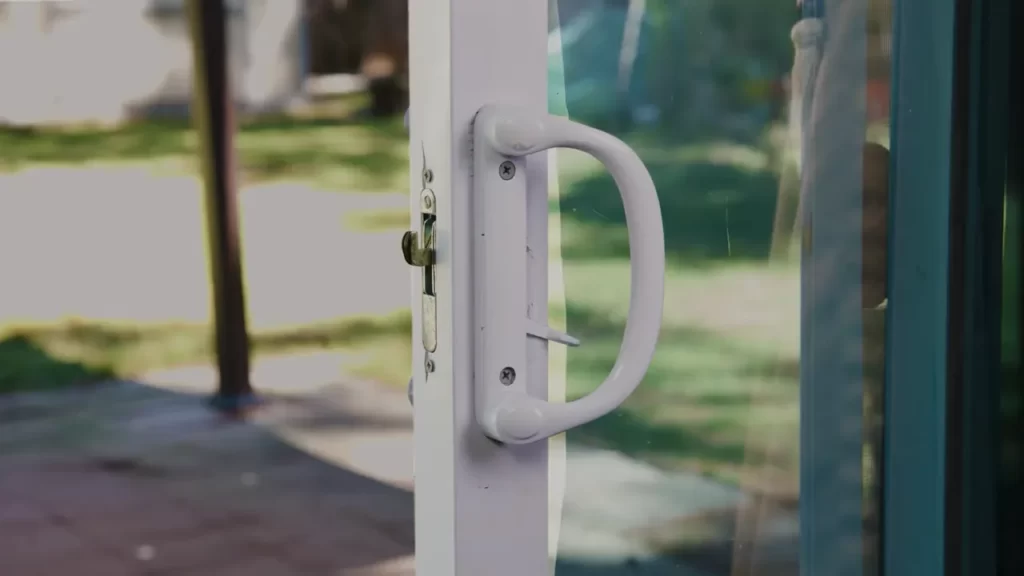
Tools And Materials Needed
One of the essential aspects of installing the Prime Line sliding door lock is having the right tools and materials at hand. This ensures not only a smooth installation process but also a sturdy and secure lock for your sliding door. In this section, we will discuss the necessary tools and materials needed to successfully install the Prime Line sliding door lock.
Necessary tools
To begin with, let’s take a look at the tools you will require for the installation process:
- Screwdriver: A screwdriver is an indispensable tool for any DIY project, and installing the Prime Line sliding door lock is no exception. It is recommended to have both a Phillips-head and flat-head screwdriver, as different parts of the lock may require different types of screws.
- Drill: Depending on your sliding door and the lock model you have chosen, you may need a drill to create holes for the lock components. Make sure to have the appropriate drill bit size to ensure a precise fit for the lock.
- Measuring tape: Accurate measurements are crucial when it comes to installing any door lock. A measuring tape will help you determine the correct placement of the lock components and ensure a proper fit for your door.
- Pencil or marker: Marking the designated positions for the lock components is essential for a neat and professional installation. A pencil or marker will come in handy for this purpose.
- Masking tape: Applying masking tape to the area where you will be working not only protects the surface of the door from scratches but also serves as a guide for drilling and installation.
Understanding the components of the Prime Line sliding door lock
To ensure a successful installation, it is important to familiarize yourself with the different components of the Prime Line sliding door lock. Here are the key components:
| Component | Description |
|---|---|
| Lock body | This is the main part of the lock that houses the locking mechanism. |
| Strike plate | The strike plate is installed on the door frame and provides a surface for the lock bolt to latch onto when the door is closed. |
| Lock cylinder and keys | These components allow you to lock and unlock the sliding door from the outside using a key. |
| Lock handle or thumbturn | The lock handle or thumbturn is located on the inside of the door and allows you to lock and unlock the door without a key. |
| Mounting screws | These are the screws used to securely attach and fasten the lock components to the door. |
By understanding these components, you will have a better grasp of how the lock functions and how each piece fits together during the installation process. Now that you are familiar with the necessary tools and components of the Prime Line sliding door lock, you are ready to move on to the next step of the installation process.
Preparing For Installation
Before installing the Prime Line sliding door lock, it’s important to prepare yourself and your door for a smooth and hassle-free installation process. This section will guide you through the necessary steps to ensure a successful installation.
Measuring and marking the position for the lock
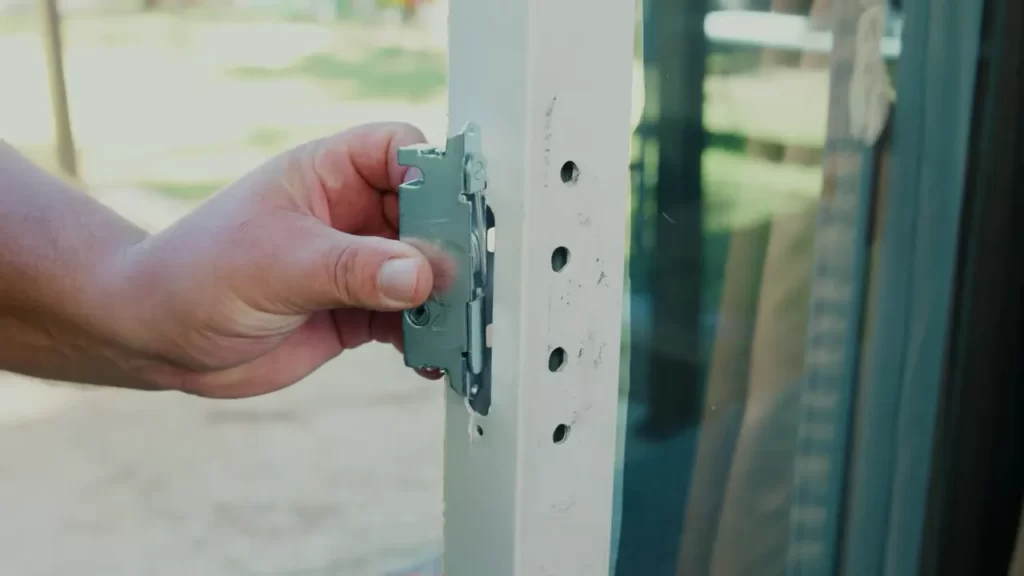
First and foremost, you need to accurately measure and mark the position for the lock on your sliding door. This will ensure that the lock is properly aligned and functions effectively. Grab a measuring tape and follow these simple steps:
- Carefully measure the distance between the top and bottom of the sliding door panel where you want the lock to be installed. Take note of this measurement.
- Next, measure and mark the center point of the sliding door panel based on the height measurement you took earlier. This will serve as a reference point for the lock installation.
- Using the center point as a guide, measure the distance from the edge of the sliding door panel to the desired location of the lock. Mark this measurement on the door as well.
With these measurements and markings in place, you’re now ready to proceed with the installation.
Ensuring the door is clean and free from obstructions
Before attaching the lock to your sliding door, it’s crucial to ensure that the door surface is clean and free from any obstructions that may hinder the installation or affect the lock’s functionality. Here’s what you need to do:
- Start by thoroughly cleaning the door panel where the lock will be installed. Use a non-abrasive cleaner and a soft cloth to remove any dirt, dust, or grime.
- Inspect the surface for any bumps, protrusions, or obstructions that may interfere with the lock. Smooth out any rough areas or remove any objects that could impede the installation.
- Make sure the sliding door is properly aligned and slides smoothly along its track. If there are any issues with the door’s movement, address them before proceeding with the lock installation.
By ensuring that your sliding door is clean and obstruction-free, you’ll be setting the stage for a seamless installation process and optimal lock performance.
Step-By-Step Installation Process
Are you looking to enhance the security of your sliding door? Installing a Prime Line sliding door lock is an effective way to achieve this. In this step-by-step installation guide, we will cover everything you need to know to successfully install your Prime Line sliding door lock. Let’s get started!
<h3>Installing the Lock Cylinder</h3>
The first step in the installation process is to install the lock cylinder. Follow these steps:
- Start by removing any existing lock or latch from the door using a screwdriver.
- Take the Prime Line lock cylinder and insert it into the designated hole on the door.
- Ensure that the cylinder is flush with the door’s surface.
- Tighten the retaining screw using a screwdriver to secure the lock cylinder in place.
<h3>Attaching the Lock Mechanism to the Door</h3>
Once the lock cylinder is installed, you can proceed to attach the lock mechanism to the door:
- Take the lock mechanism and position it on the edge of the door, aligning it with the lock cylinder.
- Using a screwdriver, insert the screws provided with the Prime Line lock into the pre-drilled holes on the lock mechanism.
- Tighten the screws firmly to ensure a secure attachment.
<h3>Testing the Functionality and Alignment of the Lock</h3>
With the lock cylinder and mechanism securely installed, it’s time to test the functionality and alignment of the lock:
- Close the sliding door and engage the lock mechanism by turning the key in the lock cylinder.
- Test the lock by attempting to open the door from the outside or inside. It should not budge when properly locked.
- If the lock does not align correctly or has difficulty functioning, adjust the lock mechanism or consult the Prime Line installation instructions for troubleshooting tips.
Congratulations! You have successfully installed your Prime Line sliding door lock. Enjoy the enhanced security and peace of mind that comes with it.
Troubleshooting And Tips
Installing the Prime Line Sliding Door Lock is a straightforward process, but like any home improvement project, it can present some challenges. In this section, we will address common issues that may arise during the installation and provide useful tips to help you overcome them. By following these guidelines, you can ensure a smooth installation process and enjoy the added security and convenience that the Prime Line Sliding Door Lock offers.
Common issues during installation and how to overcome them
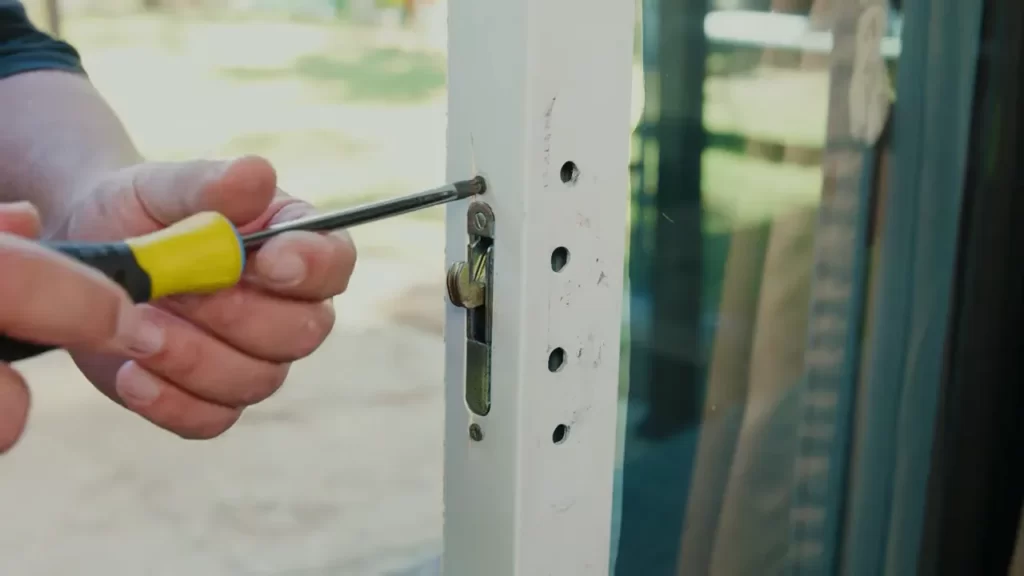
During the installation of the Prime Line Sliding Door Lock, you may encounter a few common issues. Here are some of them and the steps you can take to overcome them:
1. Misaligned holes
If you find that the holes in the door and the lock plate are not aligned properly, there are a few potential causes. One possibility is that the lock plate is not centered on the door. To rectify this, you can use a measuring tape to ensure proper alignment. Additionally, check if the door is level. If it is not, adjustments may be necessary to ensure the lock fits correctly.
2. Difficulty inserting screws
Inserting screws into the lock plate can sometimes be challenging, especially if you encounter resistance or if the screw holes seem stripped. In such cases, it is recommended to use a screwdriver with a good grip and apply firm, steady pressure while turning. If the holes are stripped, you can try using slightly larger screws or fill the holes with wood putty and then re-drill them.
Tips for ensuring a smooth installation process
To ensure a hassle-free installation of the Prime Line Sliding Door Lock, here are some helpful tips to keep in mind:
- Before starting the installation, thoroughly read the manufacturer’s instructions to familiarize yourself with the process.
- Ensure you have all the necessary tools on hand, such as a drill, screwdriver, measuring tape, and level.
- Clean the area where the lock will be installed to ensure a secure and tight fit.
- Take accurate measurements to ensure proper alignment and placement of the lock.
- Work slowly and carefully, following the step-by-step instructions to avoid any mistakes.
- Do not over tighten the screws, as this may cause damage to the lock or the door.
- Test the lock after installation to ensure it operates smoothly and securely.
By following these tips, you can minimize the chances of encountering difficulties during the installation process and achieve a successful outcome. Remember, if you ever feel unsure or overwhelmed, it is advisable to seek professional assistance to guarantee a proper installation.
Maintenance And Best Practices
Maintenance and Best Practices
Proper care and maintenance of the Prime Line sliding door lock
Proper care and maintenance are essential to ensure the longevity and functionality of your Prime Line sliding door lock. By implementing a regular maintenance routine, you can prevent potential issues and keep your lock operating smoothly. Here are some best practices for caring for your sliding door lock:
- Regularly clean the lock and its components using a soft cloth and mild soap. This will help remove dirt, dust, and debris that could affect its operation.
- Inspect the lock for any signs of wear or damage, such as loose screws, broken parts, or rust. If you notice any issues, address them promptly to prevent further damage.
- Apply a lubricant specifically designed for locks to ensure smooth operation. Avoid using oil-based lubricants as they can attract dust and debris.
- Check the alignment of the lock and the sliding door. If the lock does not align properly, it may not function correctly. Adjust the lock or seek professional assistance if needed.
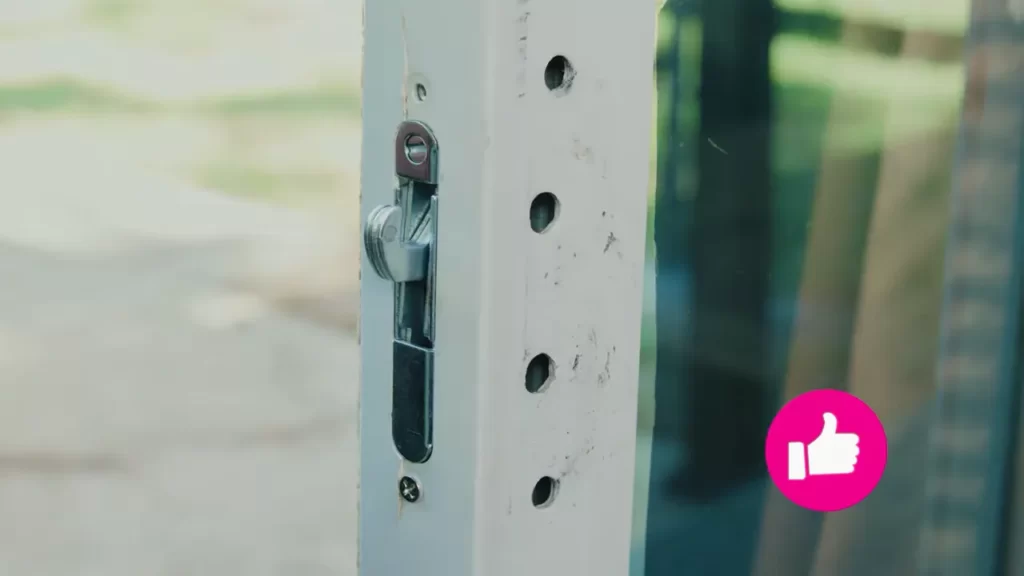
Best practices for prolonging the lifespan of the lock
Aside from regular maintenance, there are additional best practices you can follow to maximize the lifespan of your Prime Line sliding door lock:
- Avoid excessive force when using the lock. Gentle operation will help prevent unnecessary strain on the lock mechanism.
- Do not overload the lock with heavy objects or place excessive pressure on it. This can cause damage to the lock and compromise its functionality.
- Ensure the lock is properly installed according to the manufacturer’s instructions. Incorrect installation can lead to premature wear and tear.
- Protect the lock from extreme weather conditions. Harsh elements can cause deterioration and affect the lock’s performance. Consider adding a weatherproof coating or installing a protective cover if necessary.
- Regularly test the lock to ensure it is functioning correctly. Verify that it securely locks and unlocks the sliding door without any issues.
By following these maintenance and best practices, you can keep your Prime Line sliding door lock in optimal condition, prolong its lifespan, and enjoy hassle-free operation for years to come.
Additional Security Measures
When it comes to protecting your home and loved ones, ensuring that your sliding doors are secure is of utmost importance. While the Prime Line Sliding Door Lock is a fantastic option for enhancing the overall security of your sliding doors, it’s even better when supplemented with additional security features and accessories. In this section, we will explore how you can further enhance the security of your sliding doors by incorporating these additional measures.
Enhancing security with additional features and accessories
By combining the Prime Line Sliding Door Lock with other security features and accessories, you can create a robust defense system for your sliding doors. These supplementary measures provide an extra layer of protection, ensuring that your home remains secure against potential intruders. Here are a few recommended features and accessories:
1. Door Reinforcement:
Door reinforcement is a crucial aspect of sliding door security. By reinforcing your door frame and track, you can prevent forced entry attempts. Consider installing reinforced strike plates and doorjamb braces to strengthen these vulnerable areas.
2. Security Bars:
Security bars offer an added measure of defense, particularly when you’re away from home for an extended period. These bars can be placed in the track of the sliding door, preventing it from opening even if the lock is compromised. Choose security bars that are adjustable, easy to install, and made from durable materials.
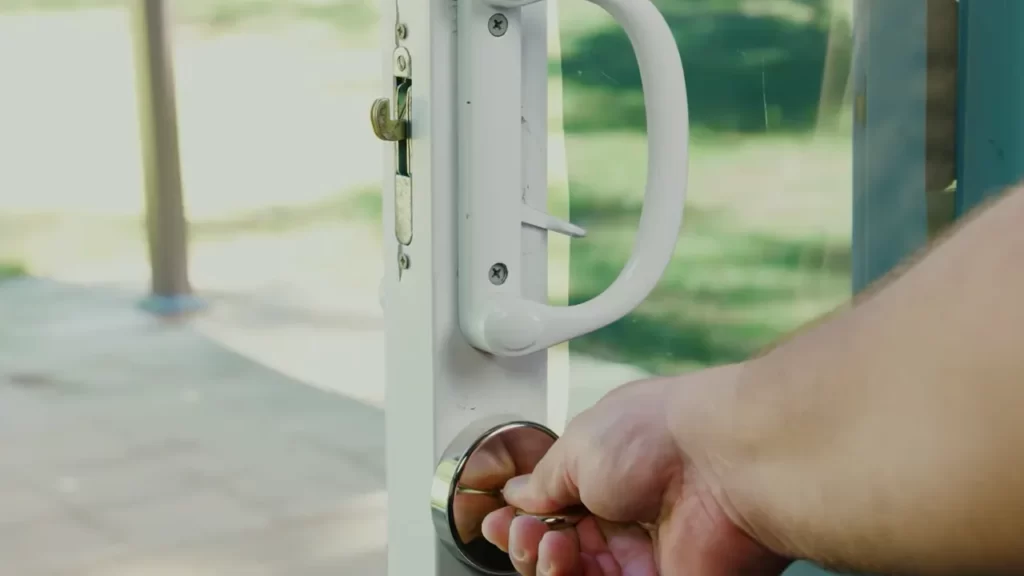
3. Window Film:
While not directly related to door locks, window film can be an effective deterrent against forced entry through glass doors. Opt for security window films that are designed to reinforce glass, making it more difficult to break. These films provide an extra layer of protection, giving you peace of mind.
Exploring other types of sliding door locks for different security needs
While the Prime Line Sliding Door Lock offers excellent security, it is essential to explore other options for different security requirements. Depending on the level of security you desire, you may want to consider alternative sliding door locks. Here are a few options worth exploring:
1. Double Bolt Lock:
A double bolt lock provides enhanced security by securing both the top and bottom of the sliding door, making it difficult for intruders to force it open. This type of lock offers increased strength and protection against break-ins.
2. Keyed Patio Door Lock:
If you prefer the convenience of a key lock, a keyed patio door lock is an ideal choice. This type of lock requires a key to unlock and lock the sliding door, adding an extra level of security. Ensure that you choose a lock that is resistant to picking and tampering.
3. Foot Bolt Lock:
Foot bolt locks are excellent for reinforcing the stationary and sliding panel of your door. This lock type is typically installed at the bottom of the sliding door and can be engaged or disengaged by foot. It offers an easy and convenient way to secure your sliding door when needed.
Remember, selecting the right sliding door lock depends on your individual security requirements. Evaluate your needs and choose a lock that provides the desired level of protection.
Frequently Asked Questions For How To Install Prime Line Sliding Door Lock
How Do You Install A Sliding Door Lock?
To install a sliding door lock, follow these steps: 1. Choose a suitable lock model. 2. Measure the door thickness to determine the lock’s compatibility. 3. Position the lock on the door, aligning it properly. 4. Drill pilot holes for the lock’s screws.
5. Secure the lock using the provided screws and test its functionality.
How Do You Replace A Sliding Patio Door Lock?
To replace a sliding patio door lock, follow these steps: 1. Remove the old lock by unscrewing it from the door frame. 2. Measure the dimensions of the old lock to ensure the new one fits properly. 3. Install the new lock by screwing it onto the door frame.
4. Test the lock to ensure it functions correctly, and make any necessary adjustments. 5. Keep the door closed and locked for safety.
Can You Install A Key Lock On A Sliding Glass Door?
Yes, you can install a key lock on a sliding glass door. It provides added security and peace of mind. Professional help may be required for proper installation.
How Do You Install A Sliding Door Latch Lever?
To install a sliding door latch lever, begin by ensuring the door is closed. Then, locate the lever and mark the desired position on the door. Drill pilot holes and attach the latch lever using screws. Test the latch to ensure it functions properly.
How Do I Install The Prime Line Sliding Door Lock?
To install the Prime Line Sliding Door Lock, start by measuring and marking the proper placement on the door. Then, drill holes and secure the lock in place using provided screws.
What Tools Do I Need For Installing The Lock?
For installing the Prime Line Sliding Door Lock, you will need a drill, tape measure, screwdriver, pencil, and the lock set itself.
Conclusion
Installing the Prime Line Sliding Door Lock is a simple and effective way to enhance the security of your sliding doors. With its easy-to-follow installation process and durable construction, this lock provides peace of mind and protection for your home or office.
By following the step-by-step instructions outlined in this guide, you can ensure that your sliding doors are secure and protected against potential break-ins. Don’t wait any longer, get your Prime Line Sliding Door Lock today and enjoy the added security it brings.
